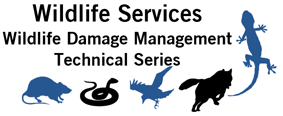United States Department of Agriculture: Animal and Plant Health Inspection Service

Wildlife Damage Management Technical Series
Date of this Version
8-2017
Document Type
Article
Citation
Hoy, M.D. 2017. Herons and Egrets. Wildlife Damage Management Technical Series. USDA, APHIS, WS National Wildlife Research Center. Fort Collins, Colorado. 12p.
Abstract
Human-Wildlife Conflicts
Landscapes -- Herons and egrets commonly cause damage at aquaculture facilities and recreational fishing waters where fish are held at high densities. In one study, on average wading birds consumed from 4 to 24 golden shiners per day at minnow production facilities in Arkansas. Great blue herons and great egrets commonly feed at catfish production facilities in Mississippi. The tendency for herons and egrets to congregate in large feeding flocks often leads to extensive loss of fish at aquaculture facilities. Fish-eating birds also can have an impact on intensively managed sport fisheries. Damage occurs when herons and egrets feed on fish purchased and released for recreational sport fishing activities. Values of these fish can be quite high given the intensity of management activities and the direct relationship of fishery quality to property value.
Livestock and Pets -- Great blue herons are known to feed on fish in backyard water gardens. This can be a problem in urban areas as fish in these small ponds often are considered valuable pets.
Human Health and Safety -- Nesting colonies often cause problems in urban areas when urbanization spreads into lowland habitats where colonial nest sites have traditionally existed. Odor from deposited fecal material in these areas is a problem. Histoplasmosis is not commonly found in soils from heron/egret rookeries, but proper conditions for this fungal disease exist in these areas. Rookeries near airports may pose a flight safety risk to aircraft.
Included in
Behavior and Ethology Commons, Biodiversity Commons, Other Animal Sciences Commons, Other Ecology and Evolutionary Biology Commons, Population Biology Commons, Terrestrial and Aquatic Ecology Commons


Comments
US government work